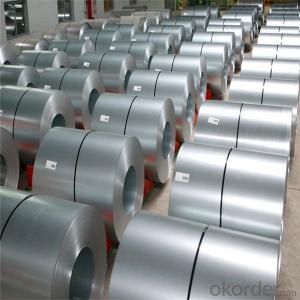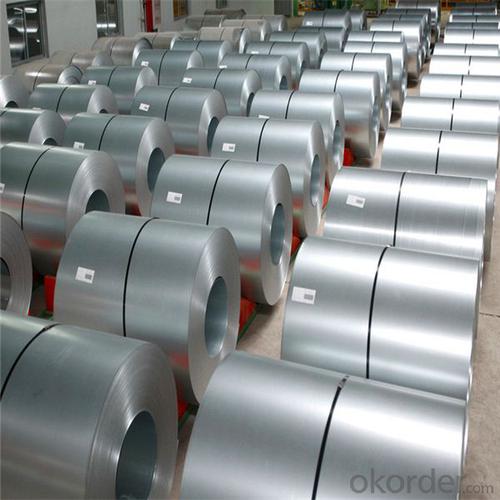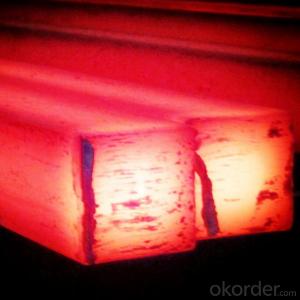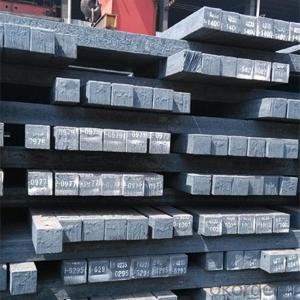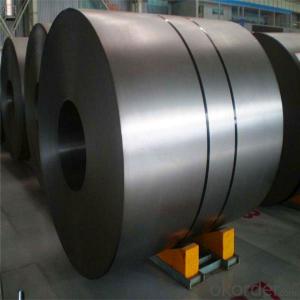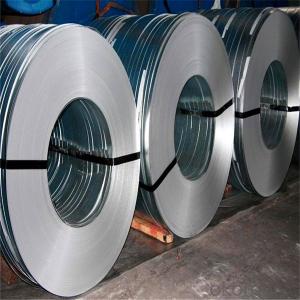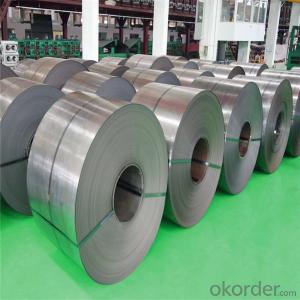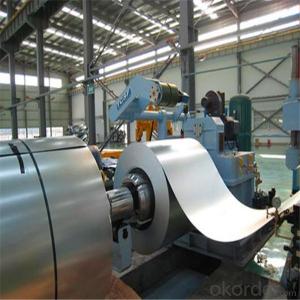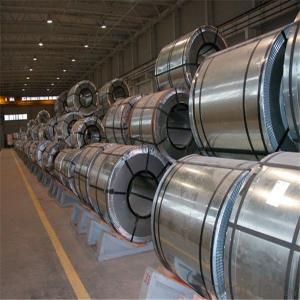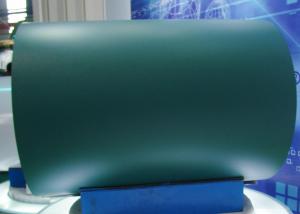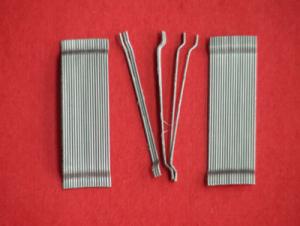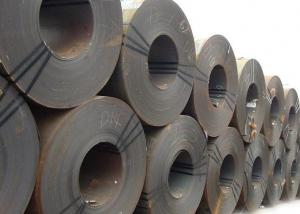Cold Rolled Steel Sheet/Coil Made in China
- Loading Port:
- China main port
- Payment Terms:
- TT OR LC
- Min Order Qty:
- 23 m.t.
- Supply Capability:
- 50000 m.t./month
OKorder Service Pledge
OKorder Financial Service
You Might Also Like
Specification
Prime Quality SPCC Cold Rolled Steel Sheet/coil
Widely used to appliance,automobile industry or other decoration usage.
Certificate: ISO9001
Packing Details: Wrapped by water proof paper and plastic film.Covered with iron sheet,strapped by steel strips to protect the damage under transportation.
Details please check following format
Brief Introduction
Cold rolled steel coil is steel that has been worked below its recrystallization temperature by passing it between a pair of rollers. Recrystallization temperature is the temperature at which grains in the lattice structure of the metal have been rearranged, leaving it free of strain and deformations. Cold rolled steel coil is pre-treated before being cold rolled with a process known as pickling, which uses strong acids to remove scale and other impurities. The cold rolled steel coil is then passed through rollers to reduce its thickness. Most cold rolling takes place in multiple passes and as the size of the cold rolled steel coil is further reduced, its strength and hardness both increase, but its ductility decreases. After cold rolling, heating the metal up in a process known as annealing can restore some of its ductility. The final cold rolled steel coil may be manufactured in the form of sheets, strips, bars, or other forms.

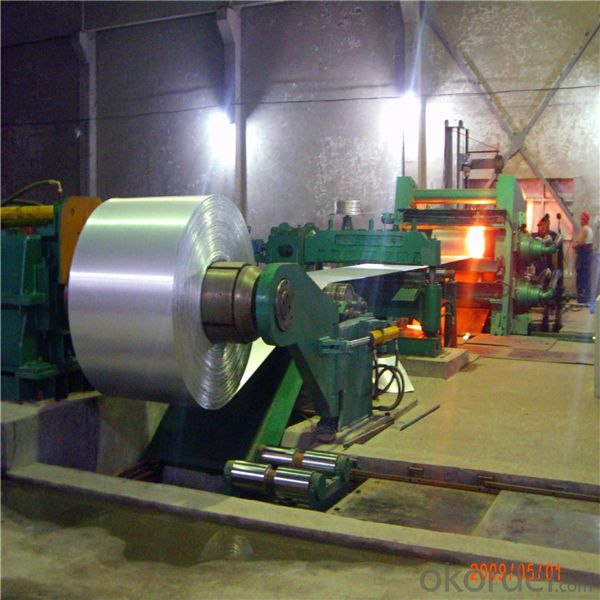

1. Q: Where is your company located? How can I visit there?
A: Our company is located in Beijing, China. Welcome to visit us.
2. Q: Can I get sample and how long will it take?
A:Yes. We can supply sample. And you need to pay for courier.
3. Q: What's the MOQ?
A: Our MOQ is 25mt.
4. Q: What's the delivery time?
A: It will take about 30 days after TT or L/C.
5. Q: What is the payment terms?
A: T/T, L/C at sight
6. Q: How does your factory carry out quality control?
A: We attach great importance to quality control.Every part of our products has its own QC.
7. Q: What certificate do you have?
A: We have SGS, ISO9001 etc.
- Q: How do steel products contribute to the construction of theme-based amusement parks?
- Steel products play a crucial role in the construction of theme-based amusement parks by providing the necessary structural support and durability required for the various attractions and rides. From roller coasters to observation towers, steel is used to create sturdy frameworks that can withstand the forces and stresses associated with these dynamic and thrilling experiences. Additionally, steel is also utilized for creating decorative elements, such as themed facades and sculptures, enhancing the overall immersive experience for park visitors.
- Q: What are the different types of steel sections?
- There are several different types of steel sections, including I-beams, H-beams, U-channels, angles, and T-sections. Each type of section has its own unique shape and structural properties, making them suitable for various applications in construction and engineering.
- Q: How is steel used in the construction of shopping malls and retail centers?
- Steel is commonly used in the construction of shopping malls and retail centers due to its strength, durability, and versatility. It is used in various structural elements such as beams, columns, and frames, providing stability and support to the buildings. Steel is also used in the construction of roofs, walls, and facades, offering design flexibility and aesthetic appeal. Additionally, steel is often utilized in the construction of escalators, staircases, and elevators, ensuring efficient vertical transportation within these commercial spaces.
- Q: How are steel plates heat-treated for improved strength?
- Steel plates are heat-treated for improved strength by subjecting them to a specific heating and cooling process known as quenching and tempering. This involves heating the steel plate to a high temperature and then rapidly cooling it to harden the material. Afterward, the plate is reheated to a lower temperature to temper it, which helps to reduce brittleness and improve its toughness and overall strength.
- Q: How are steel pipes used in the transportation of natural gas?
- Steel pipes are commonly used in the transportation of natural gas due to their strength, durability, and resistance to corrosion. These pipes are used to create a network of pipelines that transport natural gas from production wells to distribution centers and ultimately to homes, businesses, and industries. The steel pipes are designed to withstand high pressure and can transport large volumes of natural gas over long distances efficiently and safely.
- Q: How is steel used in the production of fire-resistant materials?
- Steel is often used in the production of fire-resistant materials as it provides strength and structural support to these materials. Steel is used to reinforce walls, doors, and other components of fire-resistant structures, making them more resistant to the heat and flames of a fire. Additionally, steel can be used as a coating or cladding material to provide an extra layer of protection against fire.
- Q: How does steel compare to other materials like aluminum or wood?
- Steel is a versatile and durable material that offers several advantages over other materials like aluminum or wood. It is much stronger and more resistant to impacts, making it suitable for heavy-duty applications such as construction and manufacturing. Unlike wood, steel does not warp or rot, ensuring long-term stability. While aluminum is lightweight and corrosion-resistant, steel possesses greater tensile strength and can withstand higher temperatures. Additionally, steel is more cost-effective and sustainable, as it can be recycled indefinitely without losing its properties.
- Q: What are the different types of steel tanks and their applications in the food processing industry?
- There are several types of steel tanks used in the food processing industry, including stainless steel tanks, carbon steel tanks, and food-grade epoxy-coated steel tanks. Stainless steel tanks are commonly used for storing and processing food products due to their corrosion resistance, easy cleaning, and durability. Carbon steel tanks are often used for bulk storage of ingredients and raw materials, as they are cost-effective and can handle high capacities. Food-grade epoxy-coated steel tanks are suitable for storing acidic or corrosive food products, as the coating provides an additional layer of protection. Overall, these different types of steel tanks serve various purposes in the food processing industry, ensuring the safe and efficient storage and processing of food products.
- Q: What are the different types of steel sheets and their uses in the aerospace industry?
- There are several types of steel sheets used in the aerospace industry, including stainless steel, titanium, and aluminum alloys. Stainless steel sheets are often used in aircraft structures due to their high strength and resistance to corrosion. Titanium sheets are preferred for their lightweight properties and exceptional strength-to-weight ratio, making them suitable for critical components like landing gear and engine parts. Aluminum alloy sheets are commonly utilized for their low density, excellent formability, and good resistance to fatigue, making them ideal for aircraft skins and panels. Overall, each type of steel sheet has its unique characteristics that cater to specific needs within the aerospace industry.
- Q: What are the different types of steel cables and their uses?
- There are several types of steel cables commonly used in various applications. Some of the main types include galvanized steel cables, stainless steel cables, and carbon steel cables. Galvanized steel cables are coated with a layer of zinc to protect against corrosion, making them ideal for outdoor use or in environments with high moisture. Stainless steel cables are highly resistant to corrosion and are often used in marine, food processing, and medical industries. Carbon steel cables are strong and durable, making them suitable for heavy-duty applications such as construction, mining, and automotive industries. Each type of steel cable has its own unique properties and benefits, allowing them to be used in a wide range of industries and applications.
Send your message to us
Cold Rolled Steel Sheet/Coil Made in China
- Loading Port:
- China main port
- Payment Terms:
- TT OR LC
- Min Order Qty:
- 23 m.t.
- Supply Capability:
- 50000 m.t./month
OKorder Service Pledge
OKorder Financial Service
Similar products
Hot products
Hot Searches
Related keywords
